Hidden treasures in the ‘City of Gems’
Mention Ratnapura and the first thing that comes to your mind is the incredible assortment of gems it is famed for. The ‘City of Gems’, just 90 kilometres from Colombo is a perfect destination for our ‘All in a Day’ travel series which explores the lesser known attractions as well as the known.
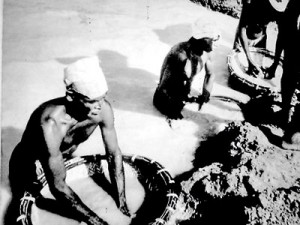
Old photographs of the gem mining process at the National Museum
While the city’s narrow streets are abuzz with the gem merchants and buyers early in the morning, the day traveller who visits to the city, be it on business or leisure, will no doubt enjoy the scenic beauty of tea and rubber plantations, waterfalls and natural springs set against the backdrop of misty mountains.
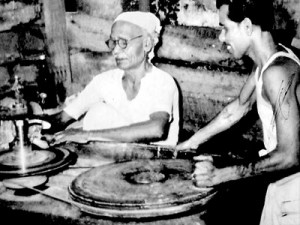 The National Museum in Ratnapura stands testimony to the wealth of natural gems and mineral stones found from the area such as Garnets, Sapphires, Rubies, Topaz and Amethysts.
The National Museum in Ratnapura stands testimony to the wealth of natural gems and mineral stones found from the area such as Garnets, Sapphires, Rubies, Topaz and Amethysts.
Showcasing the gem industry, the Museum has tools used for gem mining, a model depicting the mining process and a collection of old photographs of traditional gem mining.
Located along the Colombo-Ratnapura Road, the Museum is housed at the majestic old Ehelepola Walawwa- the official residence of the Ehelepola Nilame who served as the Disawe (the local Governor) of Ratnapura. Converted to a Museum today, this regal walawwa is home to a number of artifacts and a wealth of natural science that tells of the proud cultural and natural heritage of the Ratnapura 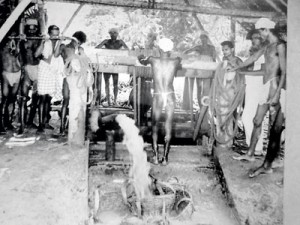 region.
region.
The Museum displays traditional tools used by the inhabitants of Sabaragamuwa, musical instruments, jewellery, utensils used for food consumption, the traditional attire worn by the people and also has a palanquin (dolawa) from a temple in the vicinity. The exhibition rooms have a collection dedicated to wet zone insects, reptiles and medicinal plants common to the Sabaragamuwa Province. Interestingly, a section of the Museum also displays the fossilised remains of various animals such as hippopotamus recovered from the

The replica of Buddhagaya at Punchi Dambadiva. Pix by Susantha Liyanawatte
gem pits in the area. The Palaeobiodiversity Park found in the Museum grounds represents the species believed to have existed in the area through life-sized animal sculptures.
The city has several privately-owned gem cutting centres and museums and one such interesting venue is located along Pothgul Vihara Mawatha, a short distance from the town. This gem museum belonging to Purandara Sri Badra Marapana was established in the 70s to showcase his large collection of gems, stones and minerals. Visits to the museum can be arranged by appointment only.
The next stopover was at Saman Devalaya, the shrine of the deity regarded as the guardian of Sabaragamuwa, one and half km away from the main town. Significantly, the legend of this important place of worship too relates to gem mining.
The devalaya was built in 1226 by the Arya Kamadeva Maha Amathi of King Parakramabahu II, during the time the latter ruled in Dambadeniya. On the instructions of the king, the Arya Kamadeva is said to have visited Sabaragamuwa for gem mining, to fulfil the King’s request to fill up the Royal coffers that were running low at that point. In Ratnapura, Arya Kamadeva found a statue of God Saman before which he made a vow for the success of his mission. As he was able to accomplish his task, out of gratitude to God Saman, he constructed a devalaya at the location.
Design-wise, it is a unique piece of architecture; a wahalkada opening up to the lower platform and a flight of steps from the lower platform leading to the upper terrace where the main shrine of the devalaya is located. A curious item is the Portuguese period ‘gun’ which is currently used to signal the start of the annual Saman Devalaya perahera at the auspicious time.
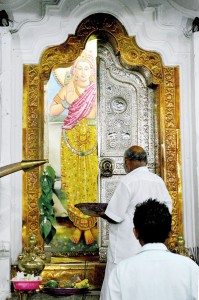
Offerings at the Saman Devalaya
On Main Street is an important shrine for Catholics – the St. Peter and Paul Cathedral which is about 135 years old. It was built during the British period, by Rev. Fr. Romero Pornellio who bought the land to put up the current structure on top of a rock, as the church was earlier located on a small plot of land in Saviya Mawatha, an area that was constantly flooded.
The beautifully crafted interior has many symbols that represents the two saints including two life size paintings on either side of Saint Peter being given a key by Christ and Saint Paul a sword. The roof is also decorated with key and sword symbols which are indicative of reliability and power.
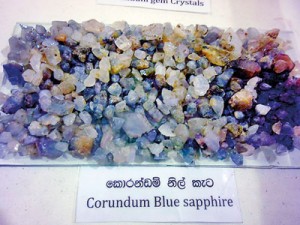
Gems on display at the National Museum
Next came our visit to Ratgama along Malwala Road via a winding narrow gravel road covering a distance of about 20 km from the Ratnapura town…purely out of curiosity to find what is called ‘Punchi Dambadiva’ (mini Dambadiva). The venue hosts replicas of the sacred monuments found in the pilgrim city of Dambadiva.
The brainchild of Ven. Gilimale Chandraloka Thero, the idea to set up a model of Dambadiva had occurred to the monk during his pilgrimage to India where he wanted to build an alternative for those unable to make the pilgrimage to this sacred site. Initiated in 1981, the Punchi Dambadiva complex currently consists of a stunning replica of Buddhagaya, Piriniwan Manchakaya depicting the passing away of Buddha located in Kusinara, replica of the first Dhamma sermon Lord Buddha preached to His five disciples in Isipathanaramaya among many other interesting monuments.
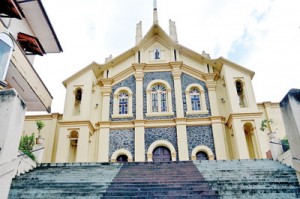 St. Peter and Paul Cathedral |
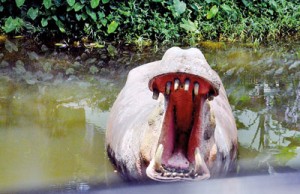 The Palaeobiodiversity Park at the Museum |


